Class 35 Biochem Unit 4 (Insulin Signaling and Glycogenesis)
1/29
There's no tags or description
Looks like no tags are added yet.
Name | Mastery | Learn | Test | Matching | Spaced |
|---|
No study sessions yet.
30 Terms
Learning Objectives
1) Identify the hormone secreted in response to high blood glucose during the fed state and which pathways this hormone activates.
2) Describe transport across membranes and how Kt determines which cells transport glucose at higher rates relative to other cells.
3) Describe how glucose stimulates insulin secretion in pancreatic beta-cells.
4) Identify the name and function of the receptor which insulin binds.
5) Describe 2 primary outcomes of insulin signaling during the fed state.
6) Describe the steps of glycogen synthesis
7) Explain how insulin signaling regulates glucose metabolism, including glycogen breakdown/synthesis and glycolysis/gluconeogenesis.
Insulin
A peptide hormone designating the fed state
-oxidation of glucose in the pancreas stimulated release of insulin
-insulin signaling stimulates glucose uptake and storage in fat and muscle cells
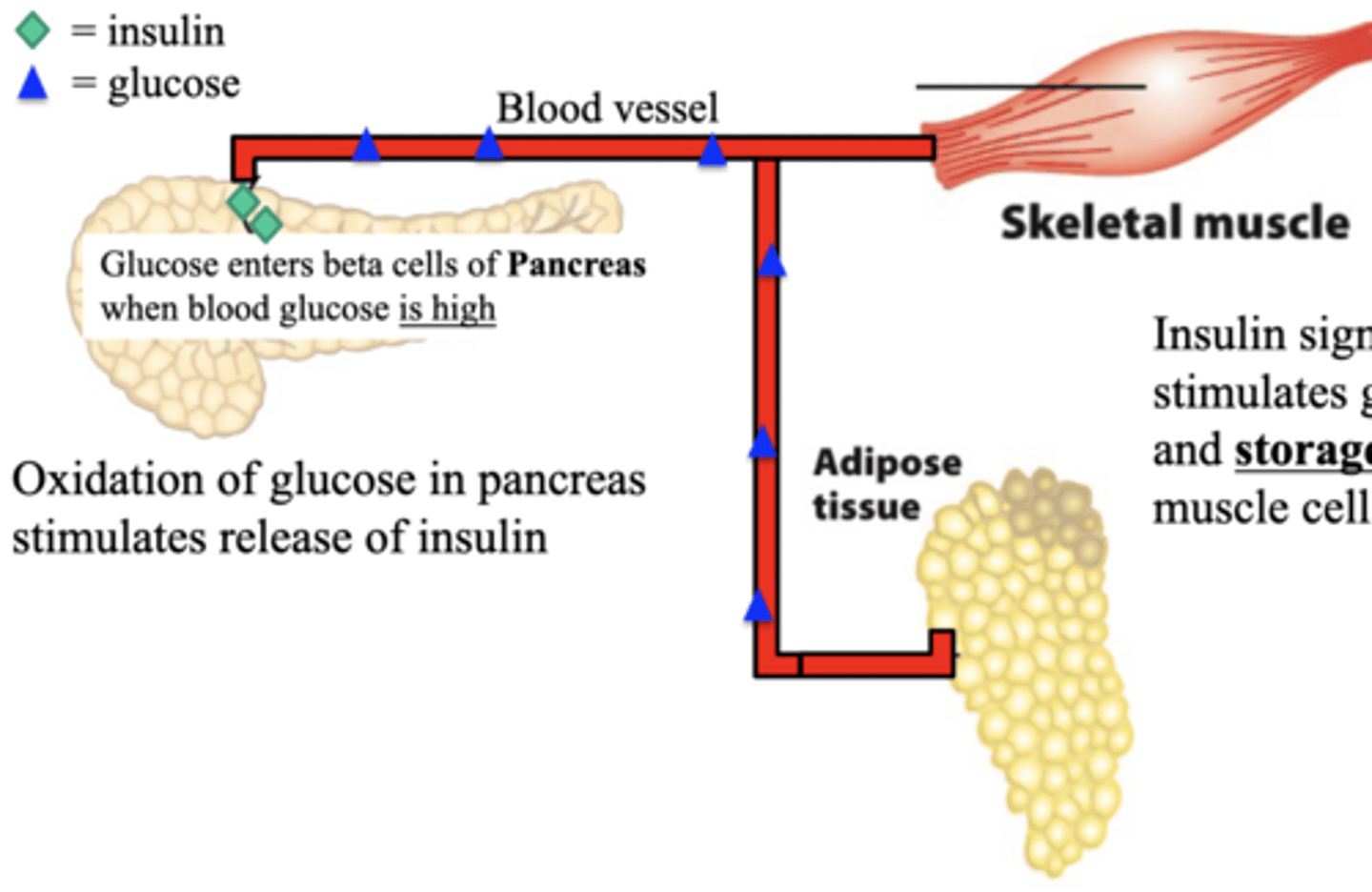
Transport across membranes
1. Passive transport
2. Active transport
Passive transport
diffusion down a gradient (high to low). no energy required
Two types:
a. simple diffusion: diffusion directly across a membrane (no protein involved)
b. facilitated diffusion: requires participation of protein carrier
Active transport
transport against a gradient (low to high). requires energy
a. primary: requires energy (ex. ion pumps)
b. secondary: requires an existing gradient formed by a primary transporter
Glucose Transporters (GLUT)
work by facilitated diffusion
Which direction will glucose be transported?
Out of the cell
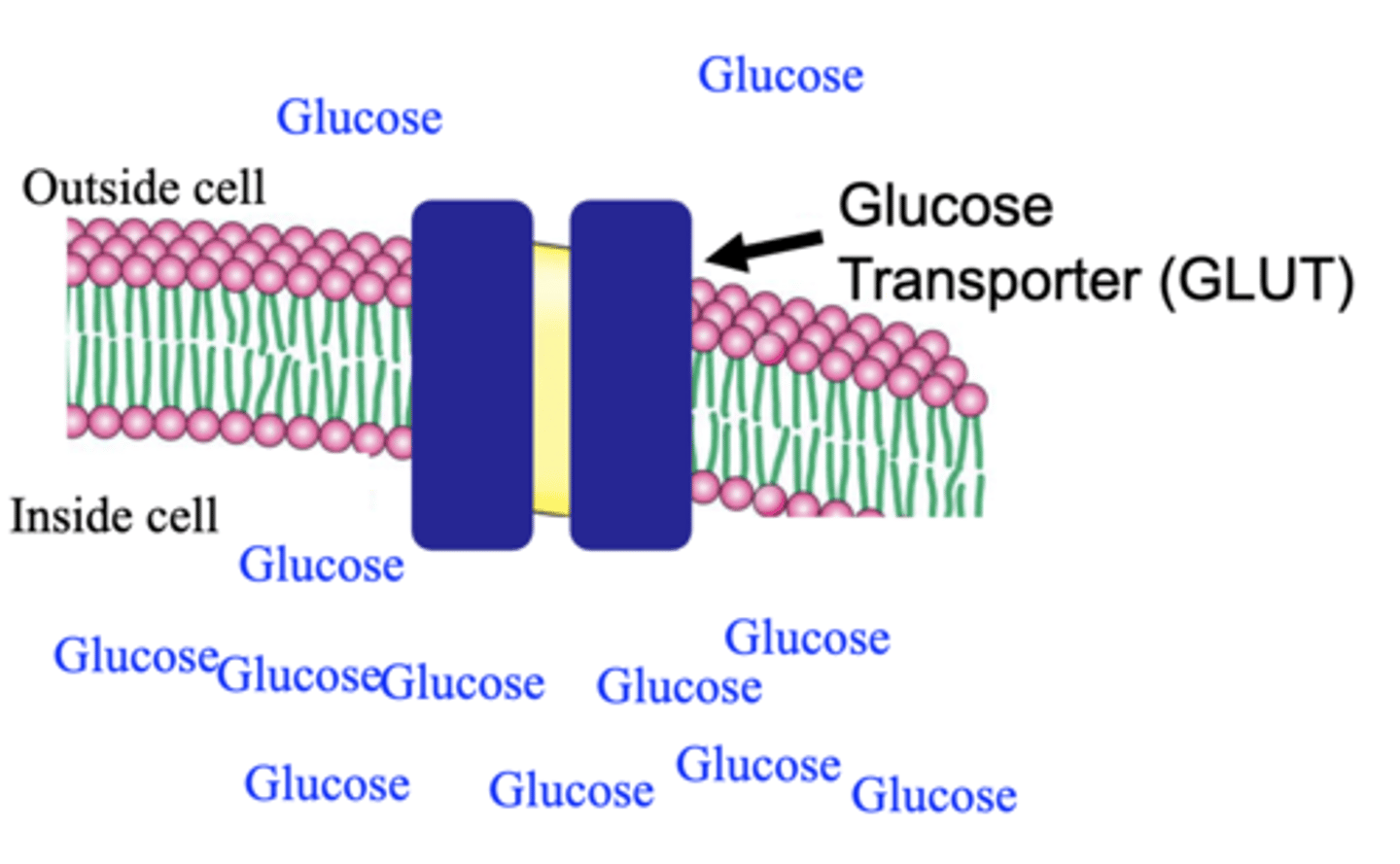
GLUT 1-14
a family of glucose transporters, facilitate the movement (passive transport) of glucose across the cell membrane
Rate equations for glucose transport
analogous to the michaelis-menton equation
-Vo= the initial velocity of accumulation of glucose inside the cell
-[S]out= the concentration of glucose in the surrounding medium
-Kt is a constant analogous to the michaelis constant
![<p>analogous to the michaelis-menton equation<br>-Vo= the initial velocity of accumulation of glucose inside the cell<br>-[S]out= the concentration of glucose in the surrounding medium <br>-Kt is a constant analogous to the michaelis constant</p>](https://knowt-user-attachments.s3.amazonaws.com/5e049020-7d44-4555-a029-933ffbc0ffd0.jpg)
The velocity values graphed in blue correspond to which transporter of glucose, GLUT2 or GLUT4?
-blue line GLUT2
-black line GLUT4

Another potential GLUT transporter was discovered in vertebrates. If this protein is a GLUT transporter, would the following statement be true or false?
The ATP/ADP ratio decreases when the transporter is maximally active.
FALSE
GLUT is a passive transporter which is facilitated diffusion
Pancreatic 𝜷-cell senses blood glucose stimulating insulin release
-5 steps
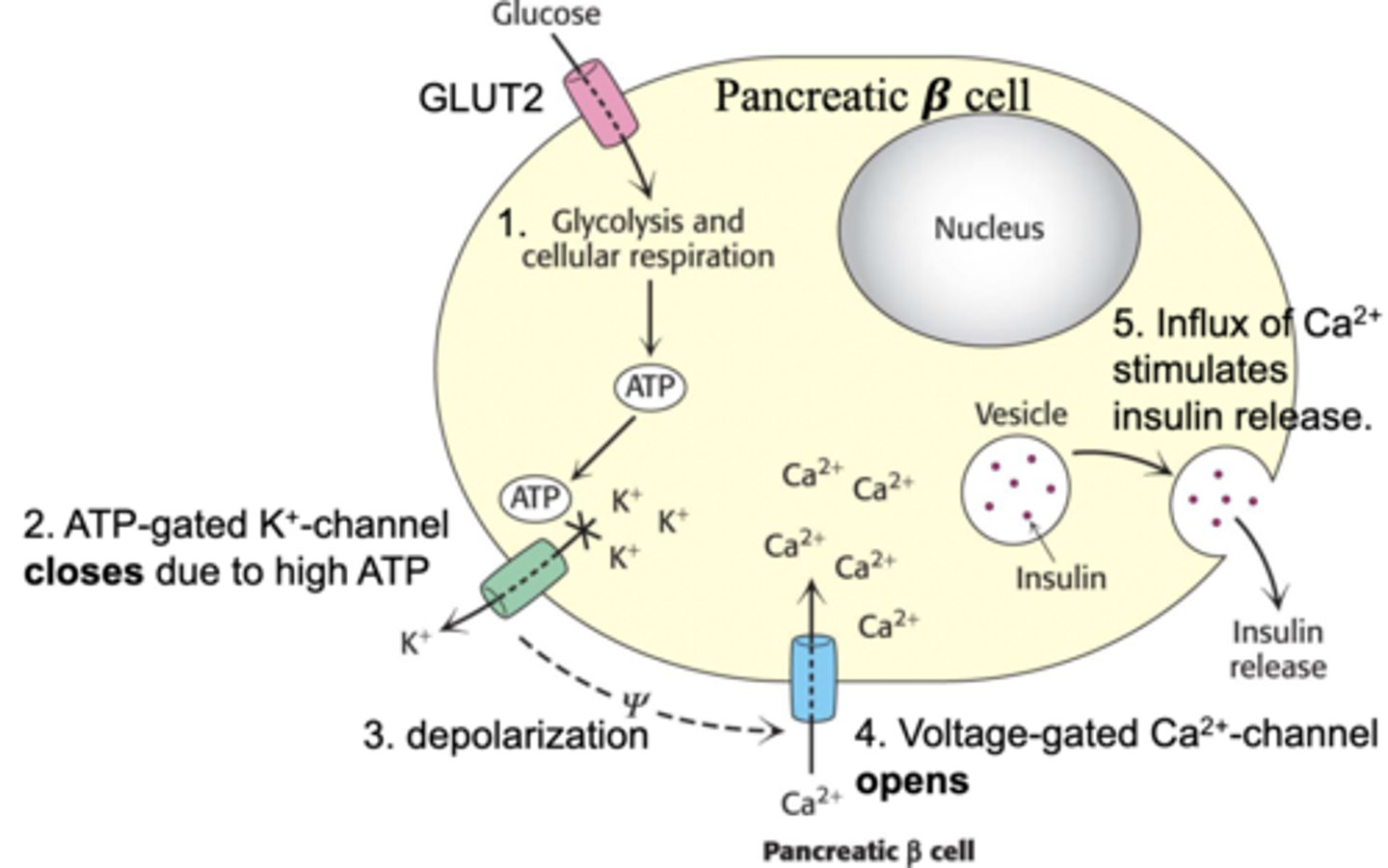
ion channels
provide an aqueous path across the membrane through which inorganic ions can diffuse at very high rates
- most have a "gate" regulated by a biological signal
- typically show some specificity for an ion
- flow stops either when the gate is closed or when there
is no longer an electrochemical gradient
Four general types of signal transducers
1. G protein-coupled receptor
2. Receptor enzyme (tyrosine kinase)
3. Gated ion channel
4. Nuclear receptor
Receptor tyrosine kinases (RTKs)
family of plasma membrane receptors with protein kinase activity
-have an extracellular ligand binding domain and a cytoplasmic Tyr kinase domain
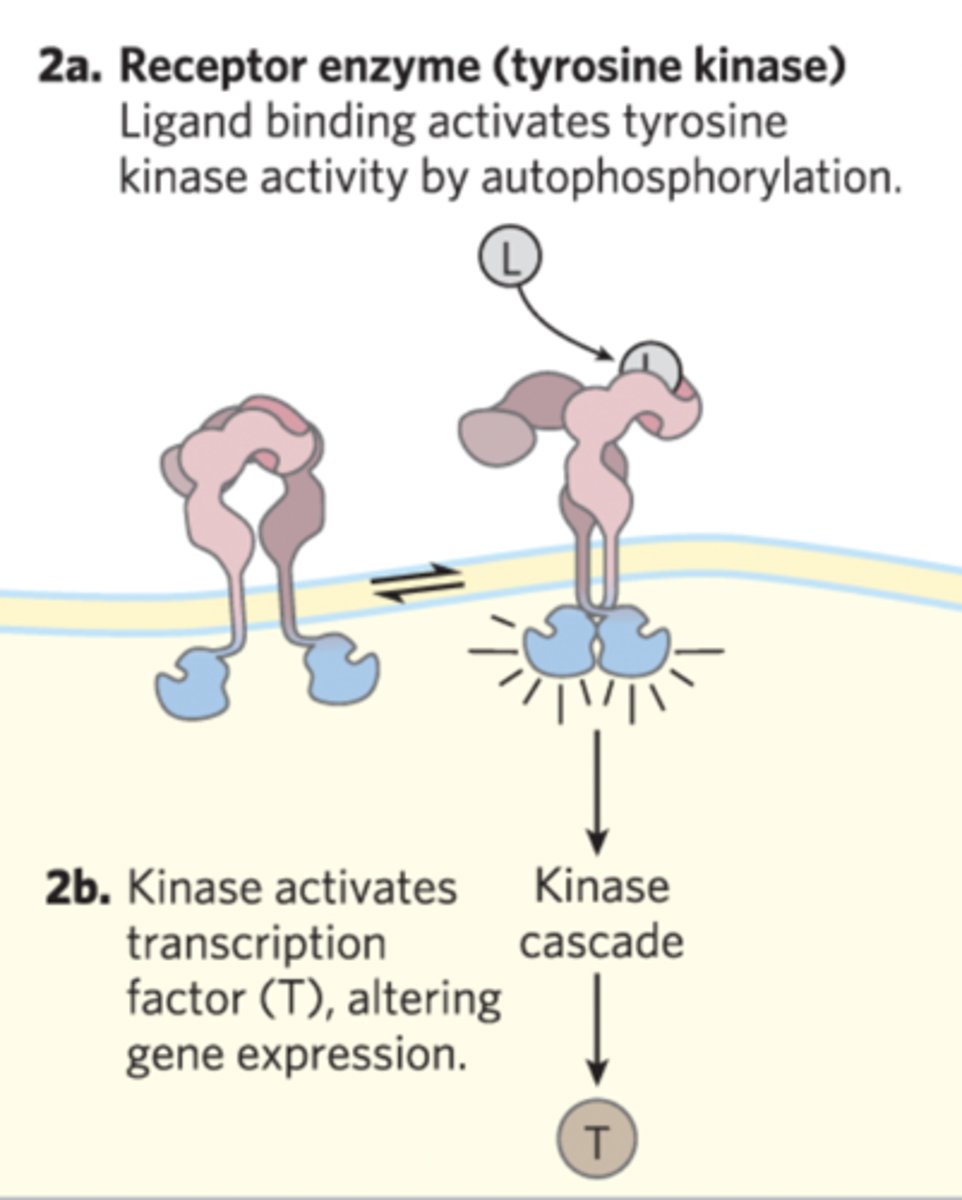
Binding of insulin to the insulin receptor
initiates a cascade of events that leads to increased glucose uptake, metabolism of glucose, and activates biosynthetic pathways
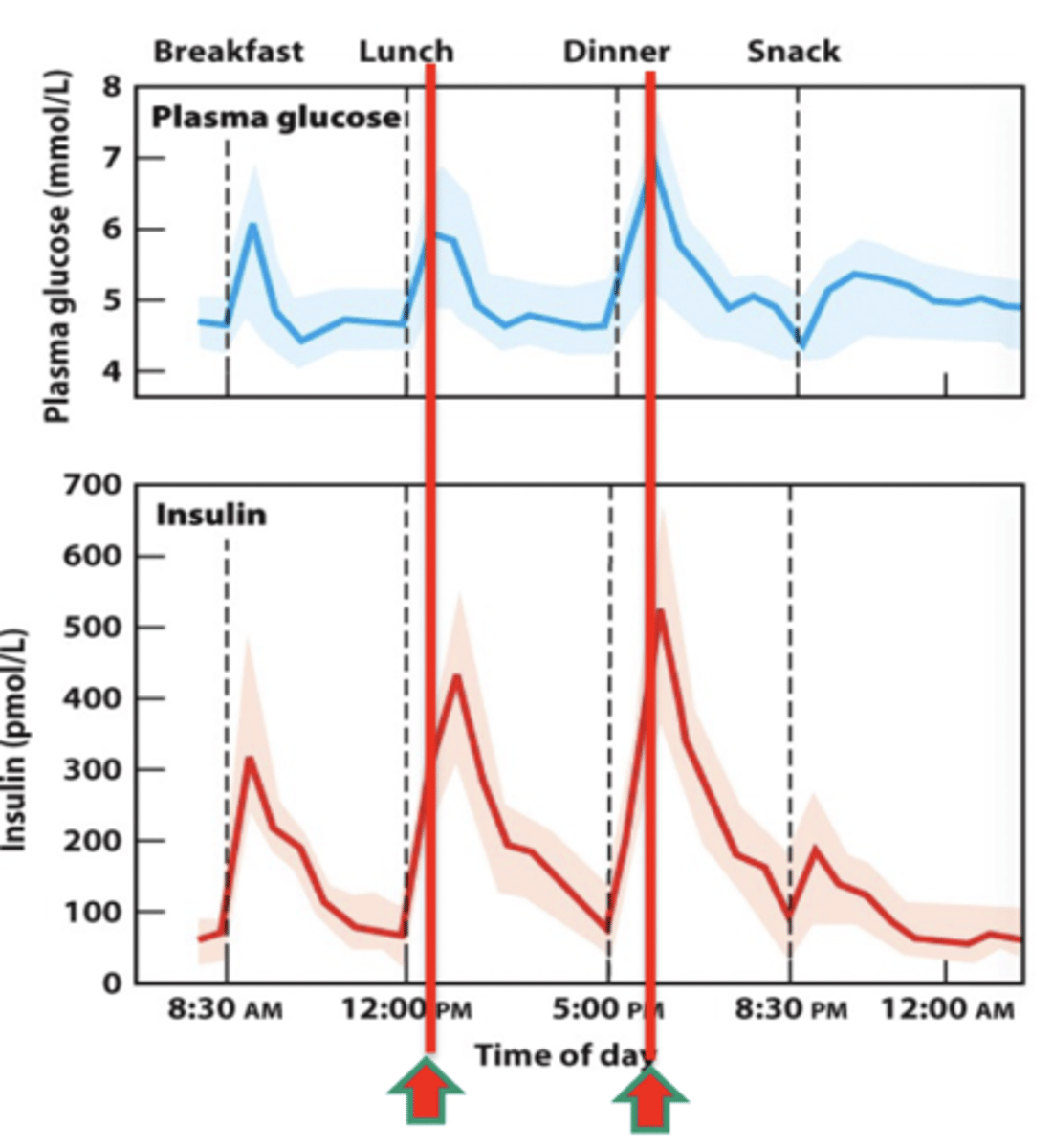
Insulin receptor has tyrosine kinase activity
1 beta subunit to 1 alpha subunit= 1 dimer
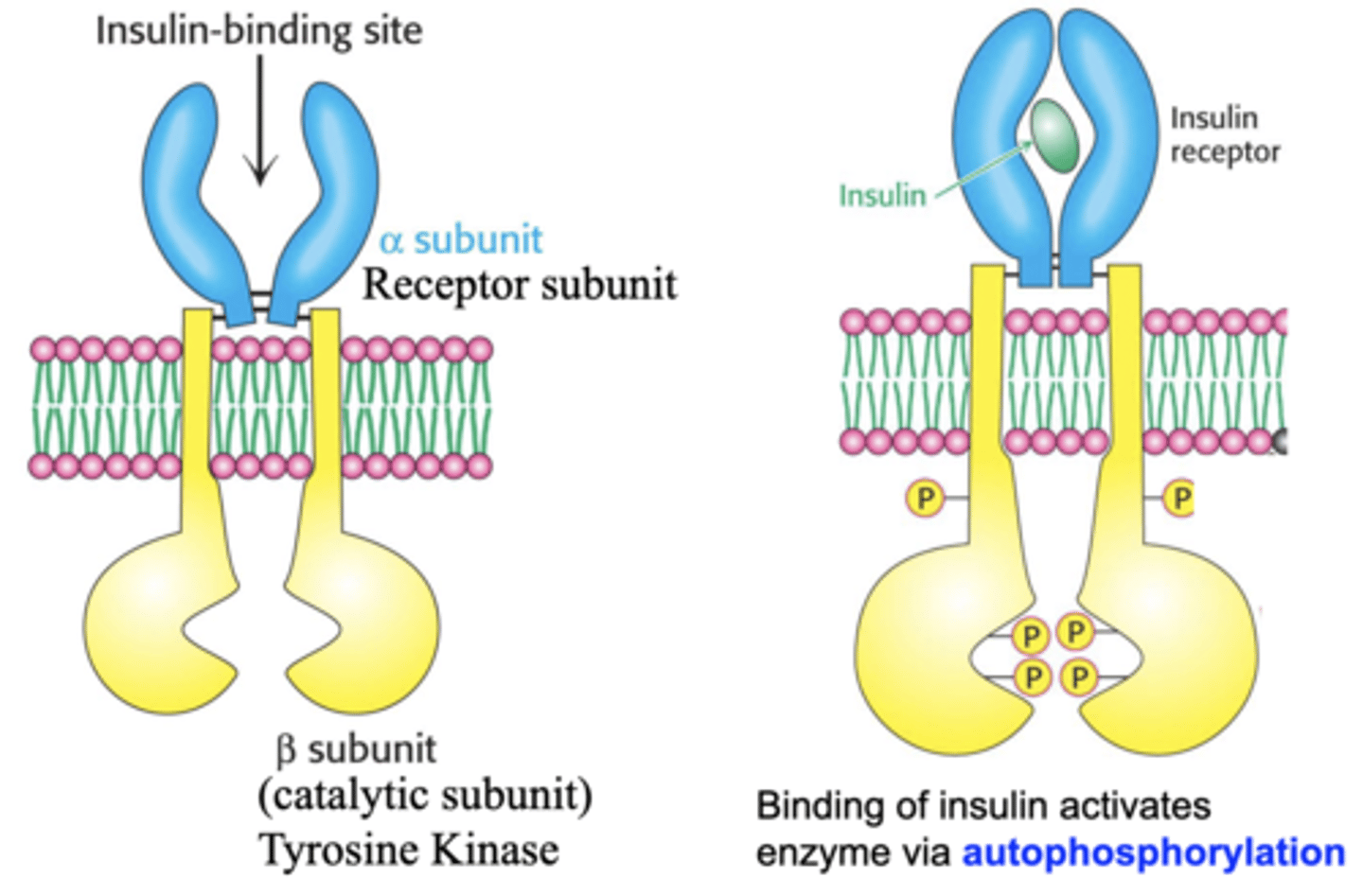
Activation of tyrosine kinase by autophosphorylation
autophosphorylation= each beta subunit phosphorylates three essential Tyr residues near the C-terminus of the other beta subunit, this opens the active site
Insulin signaling cascade

A. Insulin signaling stimulates GLUT4 movement to plasma membrane of fat and muscle cells
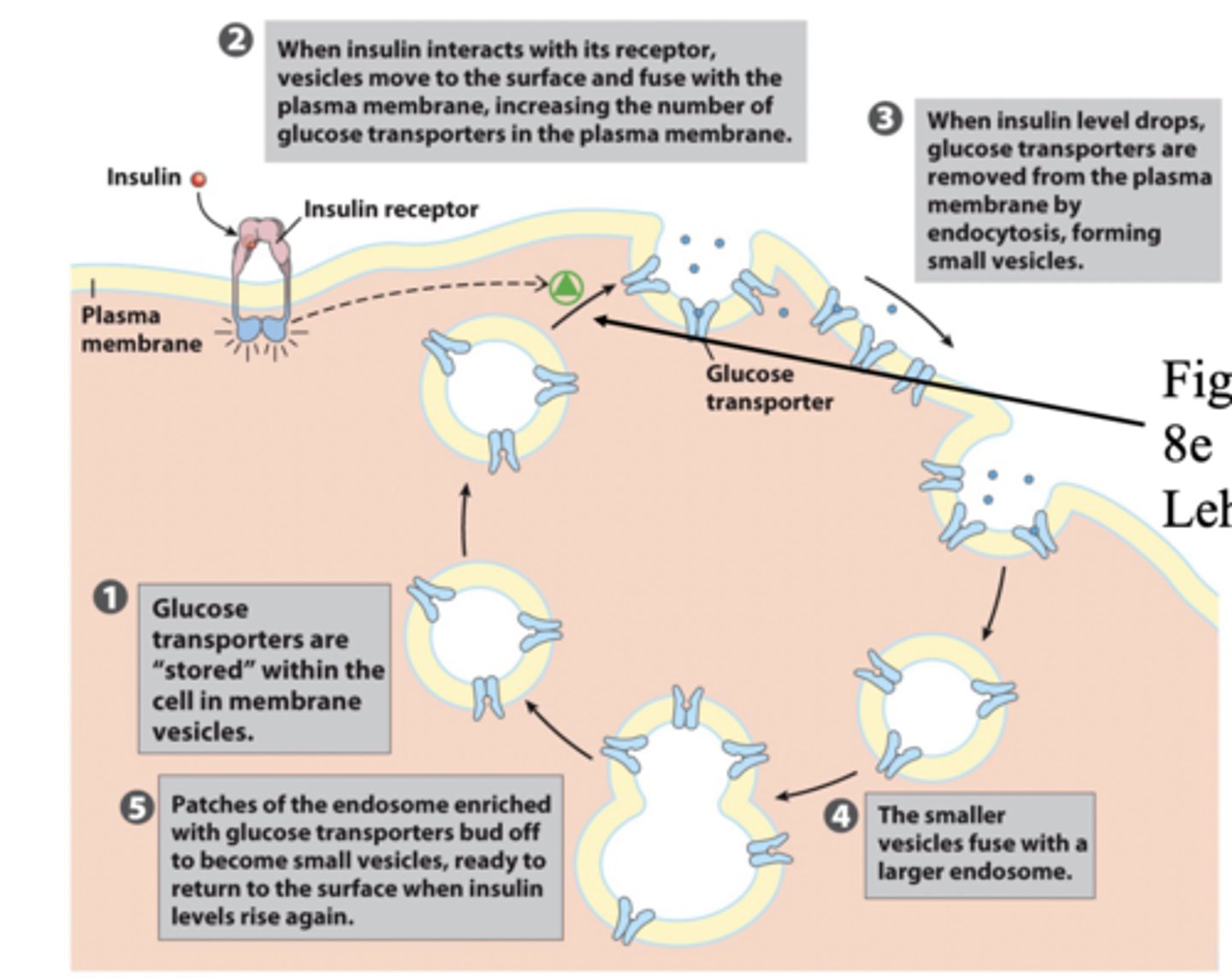
B. Insulin signaling stimulates glycogen synthesis via Phosphoprotein Phosphatase-1 (PP1) activation
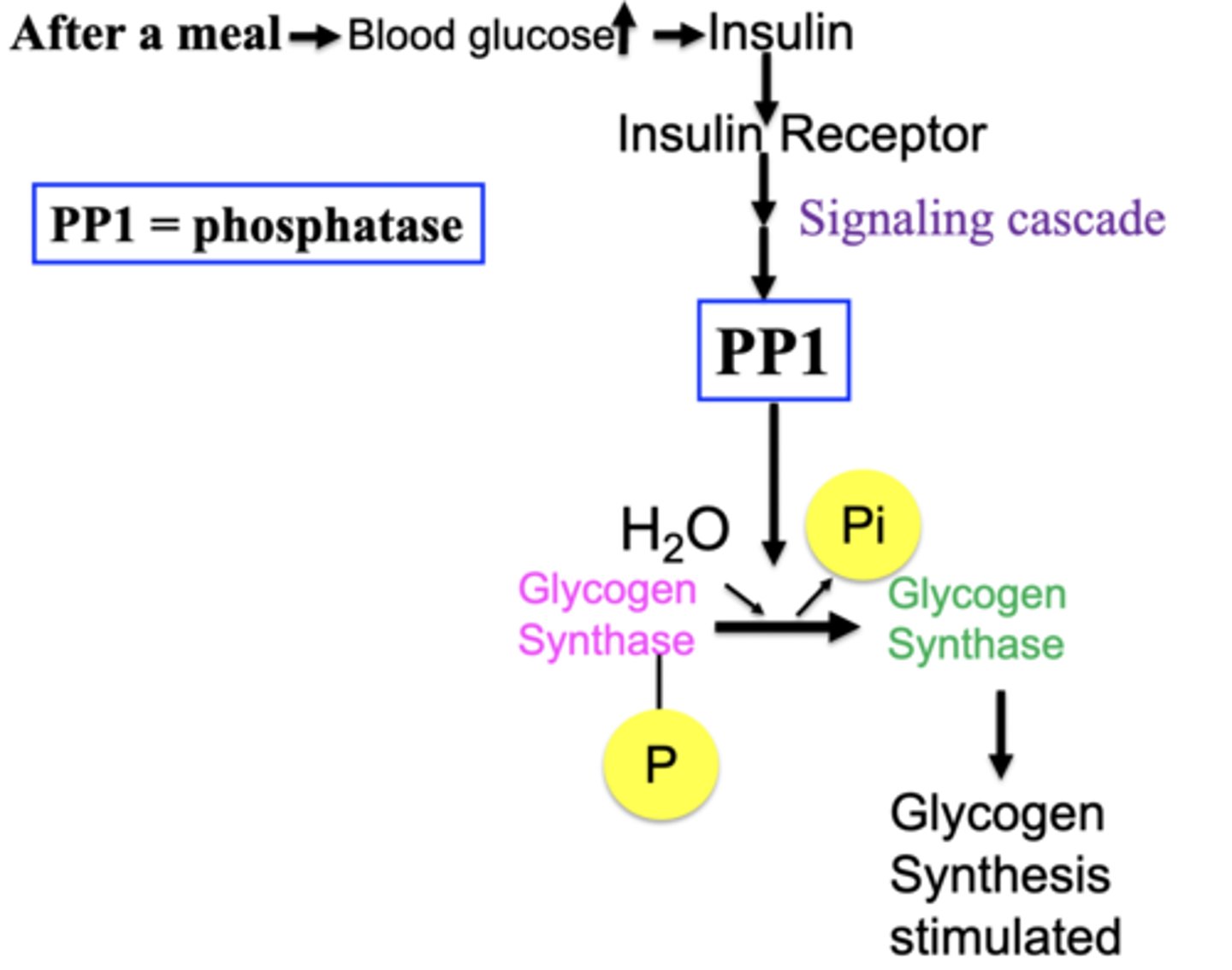
UDP-Glucose is an activated form of glucose
Glucose 1-phosphate cannot be directly added to the glycogen polymer. Glucose 1-phosphate is first converted to the activated form, UDP-glucose. Uridine diphosphate-glucose (UDP-glucose) is the glucose donor in glycogen synthesis. Synthesis of UDP-glucose by UDP-glucose pyrophosphorylase, results in the release of pyrophosphate. The reaction is subsequently rendered irreversible by the hydrolysis of pyrophosphate.
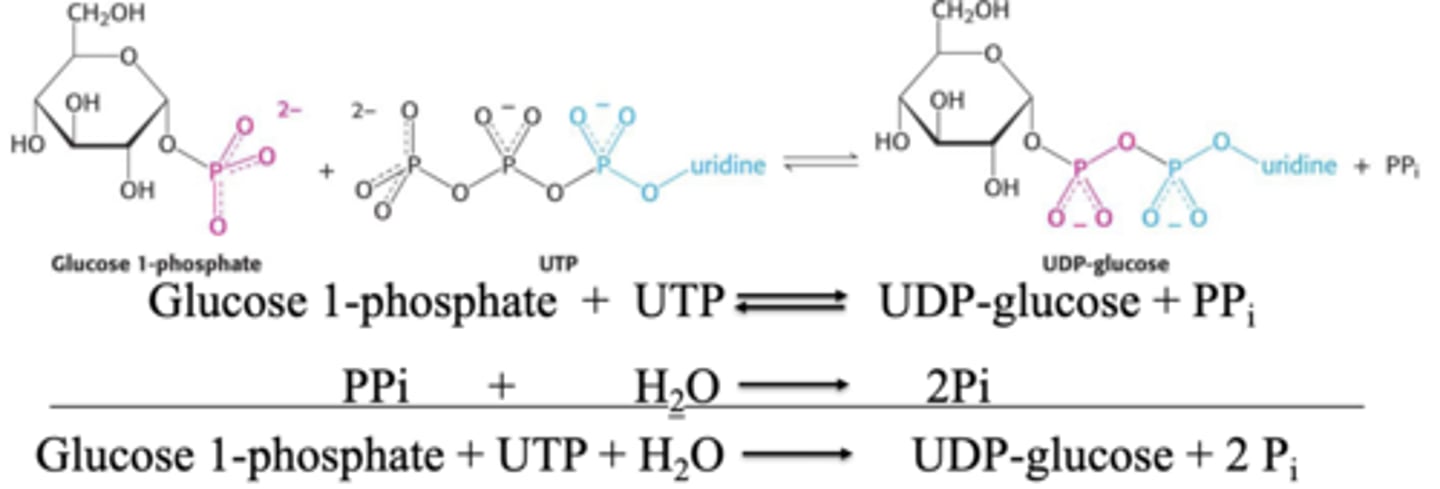
Glycogenin
starts synthesis of glycogen

when does glycogenin stop?
after several glucosylresidues have been added and glycogensynthase takes over.
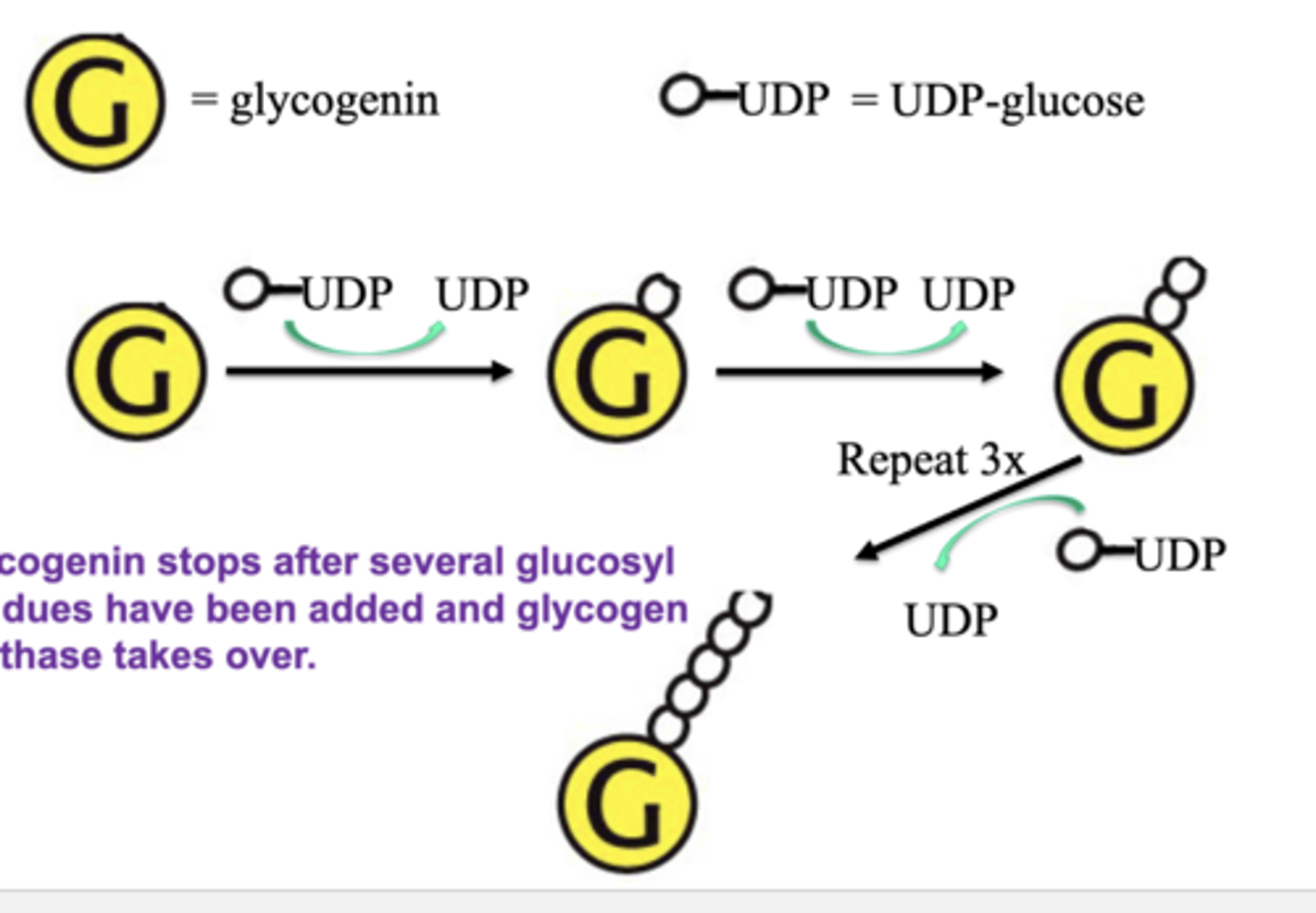
Glycogen Synthase catalyzes synthesis of glycogen chains
Glycogen synthase can only synthesize α-1,4-linkages. Glycogen synthase transfers the glucose residue of UDP-glucose to the non-reducing end of a glycogen branch.
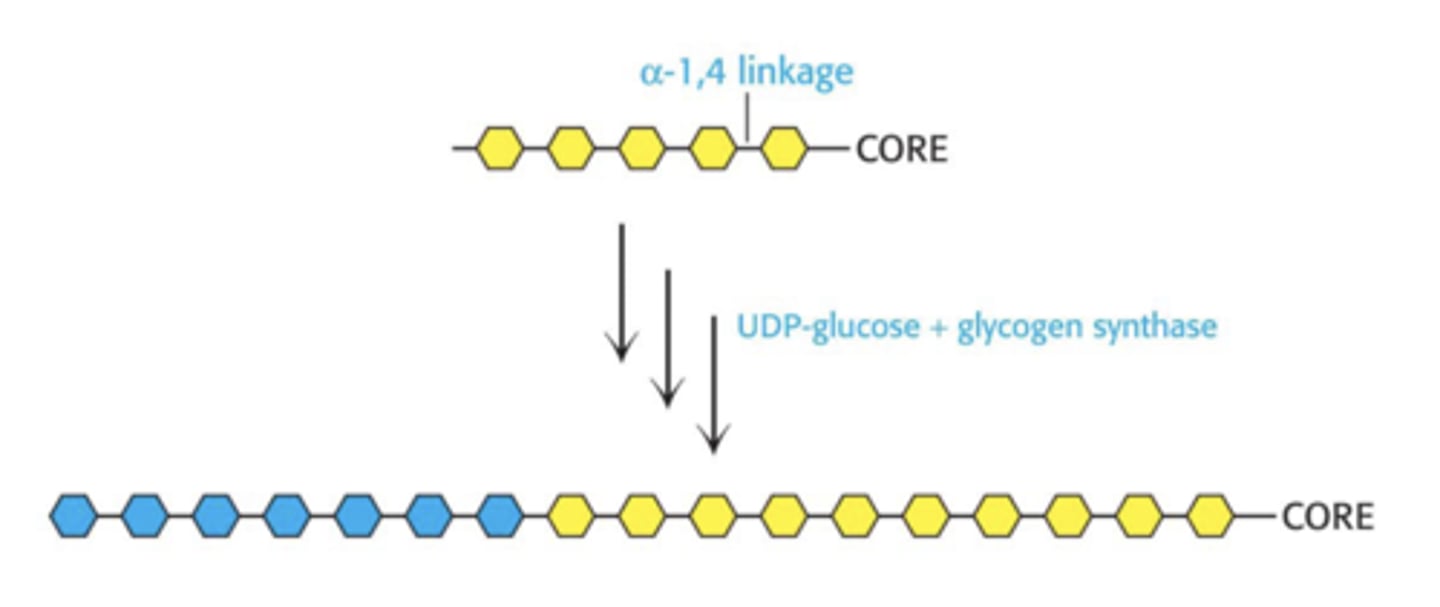
Branching enzyme catalyzes synthesis of 𝜶-1,6 linkage forming glycogen branches
The branching enzyme removes an oligosaccharide of approximately seven residues and creates an a-1,6 linkage.
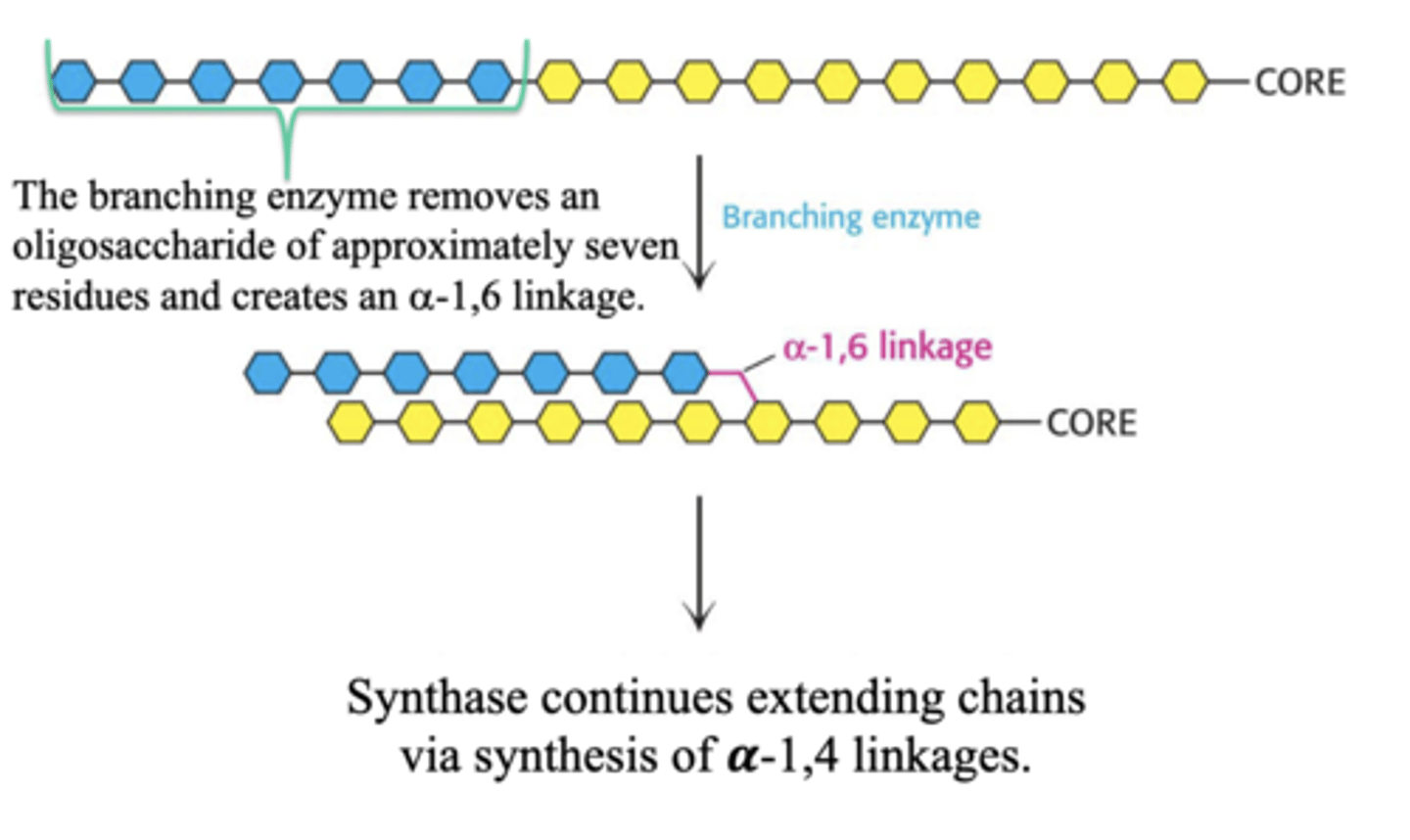
Post-translational modification regulates glycogen synthesis and breakdown
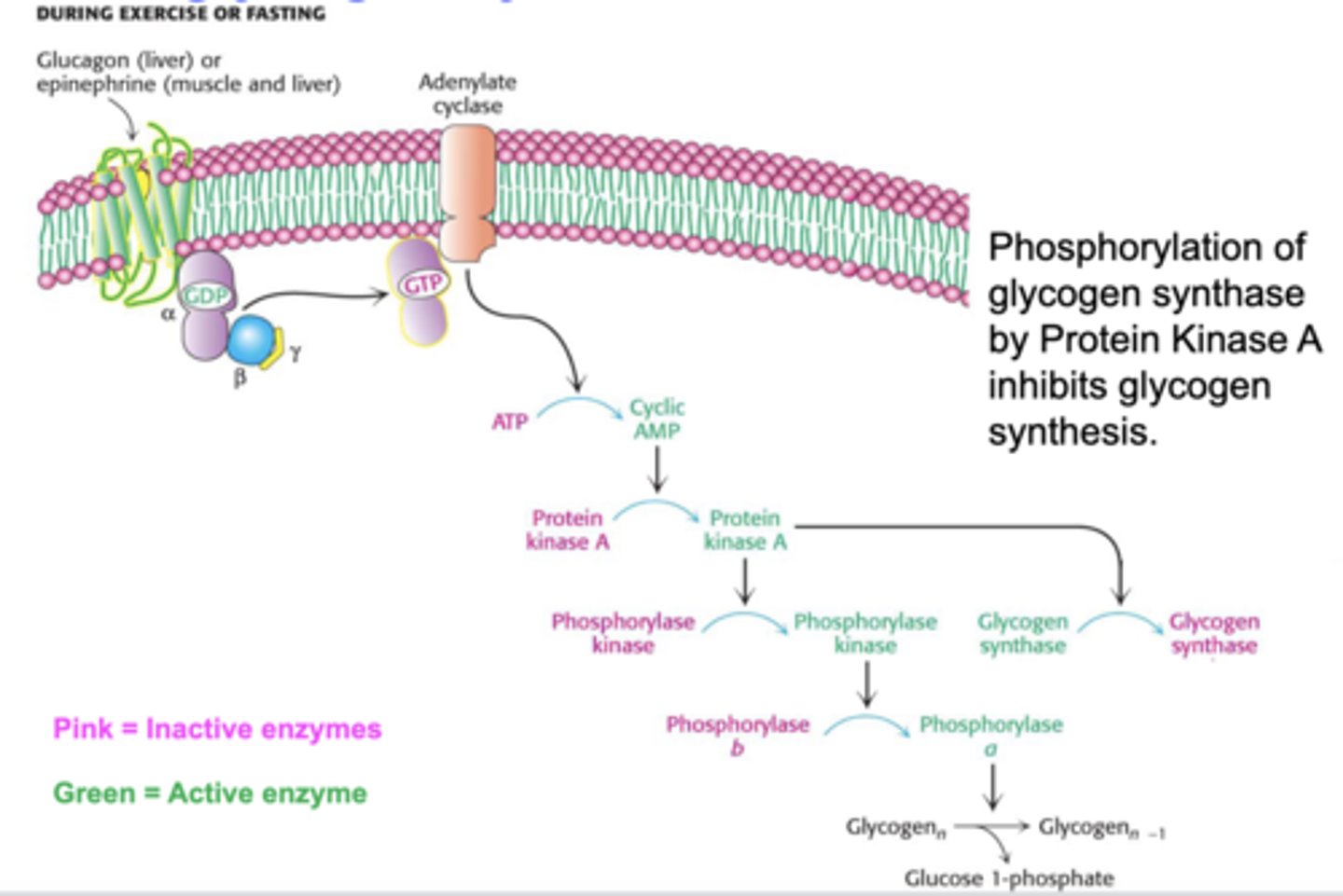
Allosteric Regulation of Liver Glycogen Phosphorylase
Think of what makes 'metabolic sense'. High blood glucose inactivates the breakdown of glycogen.
How?
Answer: The binding of glucose allows the removal of phosphates and occlusion of the active site.
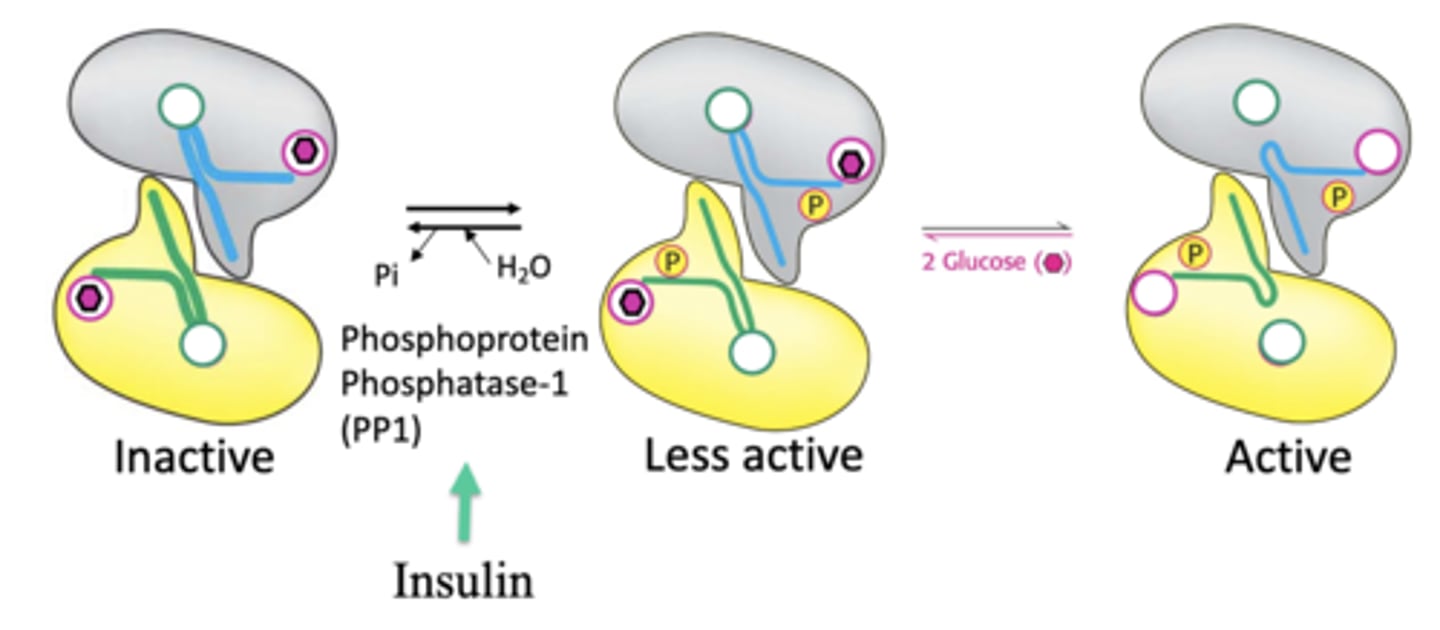
Insulin signaling stimulates glycogen synthesis and inhibits glycogen breakdown via PP1 activation
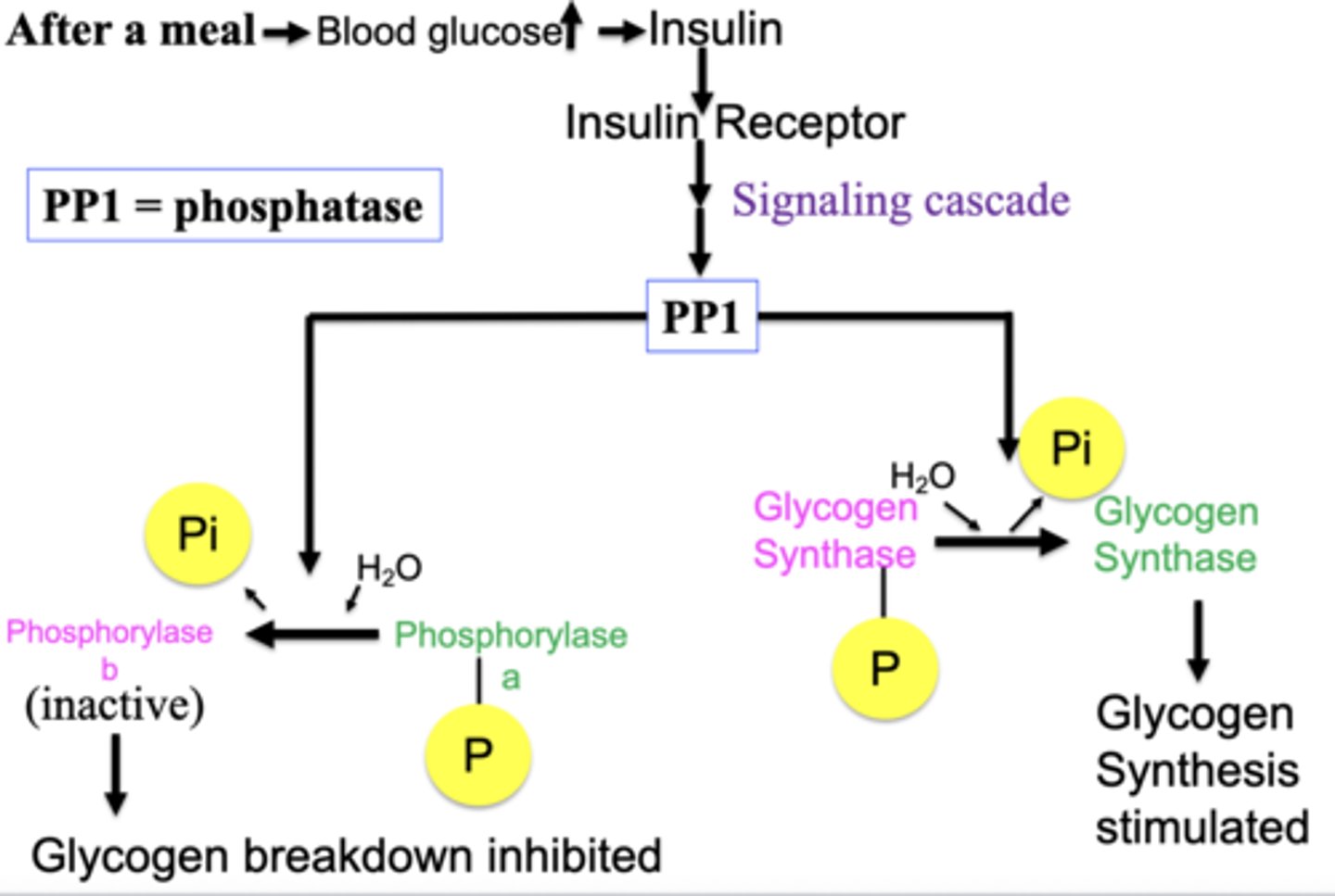
Fructose 2,6-bisphosphate is a key regulator of glucose metabolism
Rates of glycolysis/gluconeogenesis in the liver are adjusted to maintain blood glucose.
Fructose 2,6-bisphosphate stimulates glycolysis and inhibits gluconeogenesis